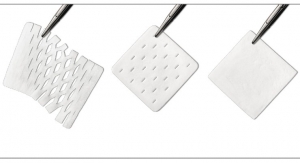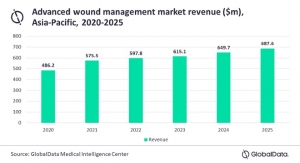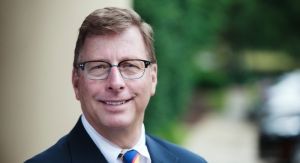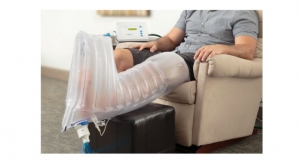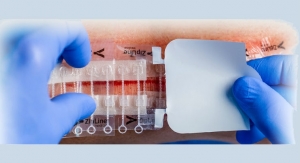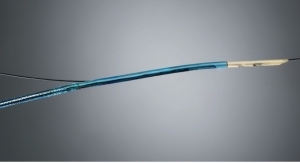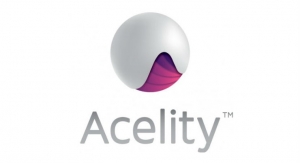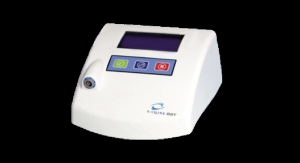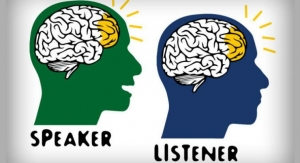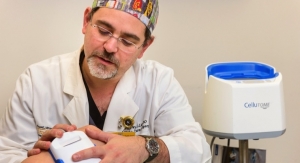Videos
Clinical Trial to Test Device That Heals Wounds with Ultrasound
Clinical Trial to Test Device That Heals Wounds with Ultrasound
NIH funds trial for the first portable and potentially wearable device to actively heal chronic wounds.
By Drexel University11.30.16
Drexel University researchers are one step closer to offering a new treatment for the millions of patients who suffer from slow-healing, chronic wounds. The battery-powered applicator—as small and light as a watch—is the first portable and potentially wearable device to heal wounds with low-frequency ultrasound.
The National Institutes of Health (NIH) has awarded the research team an estimated $3 million to test the therapy on 120 patients over the next five years. By using diagnostic monitoring of blood flow in the wound tissue, the clinical trial will also determine how nutrition and inflammation impact wound closure, making treatment customization a possibility.
The project is an interdisciplinary collaboration between Drexel's School of Biomedical Engineering, Science and Health Systems, the College of Medicine and the College of Nursing and Health Professions.
"There is no other existing treatment you can compare it with," said Peter Lewin, PhD, the project's principal investigator and the Richard B. Beard Distinguished University Professor in the School of Biomedical Engineering, Science and Health Systems. "If we can prove this is effective for a large group of patients, then we have the potential to solve a very costly and debilitating health problem."
Chronic wounds affect up to 6 million patients per year in the United States. Venous ulcers—one type of chronic wound the researchers will explore—are caused by abnormal vein function, due to blood clots, injury, aging and obesity. Chronic wounds are also some of the most dangerous and common complications of diabetes. Unlike a typical scrape or cut, venous and diabetic ulcers can take months, or even years, to heal. The only methods currently available to treat chronic wounds are passive, rather than active, such as using products to keep moisture in place, among other therapies.
Because of their high prevalence, chronic wounds are a significant economic burden to the U.S. health care system. Over $20 billion annually is spent on the treatment of chronic wounds in the United States, according to some estimates. Treatment can cost an individual patient up to $2,400 per month, so even modest reductions in healing time would help, according to Michael S. Weingarten, MD, professor of surgery at the College of Medicine and medical director of the Comprehensive Wound Healing Program at Drexel.
"There is a lot of money being spent on wound supply, visiting nurses and things like that. Those costs can run into the hundreds of thousands of dollars for an individual patient," Weingarten said. "And if the wound isn't responding, then you're really just wasting your time, and more importantly, you're not helping the patient."
Biomedical engineers and clinicians at Drexel have an ideal solution: an inexpensive, portable instrument that can speed up slow-healing injuries and is safe enough for patients to use at home.
The device heals by sending low-frequency—20 kilohertz (kHz)—ultrasonic sound waves directly to the chronic wound. While the healing potential of ultrasound to reduce swelling in injury is well known, high energy levels are not optimal for treating damaged tissue over long periods of time.
"We know the interaction of ultrasound and biological tissue can lead to undesirable effects, and we want to make sure that if we have a device that is helpful for patients, it must be foolproof," Lewin said. "It must be absolutely safe, even if a patient would inadvertently apply the treatment for 24 hours."
The device Lewin and his colleagues have developed operates at a level of energy much lower than the ultrasound units used to monitor pregnancy. Once the device is fully developed, the applicator may be applied directly to the wound using a thin piece of tegaderm, gel and medical tape. Then, with the flip of switch, the palm-sized battery pack is turned on, driving the set of transducers inside the device to create acoustic energy and begin the wound-healing process.
Since the device is compact, lightweight and portable, patients may one day be able to use it in their homes, avoiding the high costs and other inconveniences associated with frequent doctor's office visits.
In 2013, the researchers successfully tested the device on 20 patients from Weingarten's wound healing clinic. Applying the ultrasound at a frequency of 20kHz for 15-minute intervals proved to be the most effective combination of energy and duration. All five patients in the group that received this combination of treatment had healed completely by the end of the four-week treatment period. Overall, the study demonstrated that the new treatment improved healing by 15 percent per week compared to the placebo.
To monitor the wound healing process in their upcoming study, the researchers will employ near-infrared technology developed at Drexel. This optical method will measure blood vessel growth and tissue oxygenation, in order to give the researchers a more complete picture of how ultrasound can speed the healing process.
"This type of monitoring opens the door for personalized medicine," said Michael Neidrauer, PhD, an assistant research professor in the School of Biomedical Engineering, Science and Health Systems. "For instance, depending on what the optic data tells us about how well the wound is healing, we could increase or decrease the treatment time for the patient. He may only need to use the ultrasound device once per week, for example, instead of twice."
Moreover, faculty from the College of Nursing and Health Professions plan to collect health data from patients, including information about their diet and nutritional intake, to determine how those factors, as well as inflammation, could contribute to chronic wound closure.
"It's a very holistic approach to exploring this problem of chronic wounds," said Rose Ann DiMaria-Ghalili, PhD, associate professor in the College of Nursing and Health Professions, who will lead this part of the project. "We're looking at a new intervention, a new approach to monitoring healing, nutrition and inflammation, as well as how this treatment impacts the quality of life of the patient."
Results from the group's preliminary studies give the researchers confidence that the ultrasound device will accelerate closure of chronic wounds with a much larger group of patients. If they can prove efficacy and safety during the phase two clinical trial, in which they will monitor 120 patients during a 16-week period, then they will treat an even larger cohort in a third clinical trial.
In addition to Professors Lewin, Weingarten, Neidraurer and DiMaria-Ghalili, the research team for this project includes Leonid Zubkov, PhD, a research professor in the School of Biomedical Engineering, Science and Health Systems, as well as David Margolis, MD, PhD, a professor at the University of Pennsylvania.
Related Searches:


